 NYC-based PIRA Energy Group reports that WTI fell below $40/Bbl in August, hitting a 6-year low before recovering somewhat at the end of the month. In the U.S., the crude stock build propelled commercial stocks to a new record high. In Japan, crude stocks drew and kero-jet stocks led product stocks higher. Specifically, PIRA’s analysis of the oil market fundamentals has revealed the following:
NYC-based PIRA Energy Group reports that WTI fell below $40/Bbl in August, hitting a 6-year low before recovering somewhat at the end of the month. In the U.S., the crude stock build propelled commercial stocks to a new record high. In Japan, crude stocks drew and kero-jet stocks led product stocks higher. Specifically, PIRA’s analysis of the oil market fundamentals has revealed the following:
North American Midcontinent Oil Forecast
The price of WTI fell below $40/Bbl in August, hitting a 6-year low before recovering somewhat at the end of the month. Regional differentials were mixed, with inter-pipeline competition in the Permian Basin causing Midland grades to strengthen relative to Cushing WTI, while differentials for Western Canadian and other northern grades continued to weaken from very strong second quarter levels.
Storage Refills Set to Swell
After the NYMEX September futures contract limped off the board at its lowest settlement since the May contract, an outbreak of above-normal temperatures forecasts for a large swath of the U.S. in early September — particularly in the east — has for now lessened the risk of steeper price declines. With storage refills set to swell, sustained weather intervention remains necessary to temper seasonal gas-fired electricity generation (EG) declines and thereby reduce the need for still lower prices.
Western Grid Market Forecast
Western spot on-peak prices reverted to a more familiar summer pattern with Mid-Columbia at a discount to the Southwest hubs. That market shed $8/MWh to average ~$31.50/MWh. NP15 was down $2 to average ~$37.50. However, SP15, the West's premium market, was virtually unchanged at just under $39, and Palo Verde rose by $1.50 to just over $35. Inland Southwest price gains were driven by strong cooling loads with temperatures in the region's load centers averaging 2-4º F above normal. Weather in Southern California has also been hotter than normal this month, helping to propel the CAISO Balancing Authority to its strongest loads of the summer in late August. Mid-Columbia on-peak heat rates are expected to average 12,000 Btu/kWh in CY 2015 up from 8,900 in 2014. Heat rates are also expected to be up at the Southwest hubs for CY 2015 with the largest increase (~10%) at Palo Verde. However, going forward, growth in solar capacity, gradual improvement in hydro supply, and higher gas prices are expected to lead to downward pressure with modest year-on-year declines through 2017.
Cracker Margins Fall with Olefin Product Prices
U.S. steam cracker margins for all feedstocks fell last week with plunging ethylene prices. Propane and butane cracks weakened by nearly 26% to 20¢/lb ethylene. Pentanes plus margins lost 8¢ week-on-week and are now near 9¢/lb ethylene. Ethane cracks continue to trail LPG, falling to 19¢/lb ethylene per PIRA calculations.
Freight Market Outlook
The weakness in the midsized crude tanker groups seen in July was a harbinger that the counter-seasonal strength in VLCC rates was unlikely to persist much longer. VLCC rates followed suit and crashed in August, falling by 50 WS points (65%) from their July highs. The support from near record crude imports into China during June and July (7.2 MMB/D) and discharge delays in Asia related to high inventories and typhoons waned at the same time that September term crude nominations were being reduced to reflect crude runs cuts in Asia due to refinery maintenance and perhaps weaker underlying demand.
Seaborne Thermal Coal Pricing Falls, Retracing Gains from Prior Weeks
Despite a modest rebound in oil pricing last week, coal prices moved notably lower, mostly due to a bearish turn on Friday. For 4Q15 coal prices, FOB Newcastle (Australia) again held up better than API#2 (Northwest Europe) and API#4 (South Africa), as was also the case across the forward curve. The market seems to be saying (similar to PIRA’s view) that the rebound in pricing that occurred in the past two weeks was premature. Fundamentals remain soft, with major demand centers facing challenges, while supply is not backing off quickly enough. Rising oil prices limit the downside for coal pricing, but there is not enough bullish impetus to spark a sustained rally yet.
California Carbon: Choices for November Compliance To Impact Markets
The market response to auction results has been modest for the benchmark contract, though V-18s were boosted. Full reconciliation for 2013-2014 will be in November: choices regarding offset usage will impact the bank build/ stringency of the program (very few were used last November). Last-minute demand for offsets for compliance would temper CCA interest – but prices are supported by seasonal emissions, strong demand for transportation fuels, and by the increase in the floor price next year.
U.S. Ethanol Prices Lower in August
Ethanol prices were pushed down by oil values in August despite robust demand, lower stocks and reduced output. By the end of the month, prices were close to gasoline values in most of the country.
Emotions Remain High
The rhetoric this year is amped up due to a severely shrinking farm economy. Farmers and their landlords have been left to try to come together on land prices as the prospects of a better 2016 fade with each evening’s sunlight. Producers are trying to cut every penny of cost they can, getting no help so far from seed and fertilizer suppliers.
Whether the Fed Will Raise Rates in September Is Now a Toss-up
A few weeks ago, it appeared probable that the Fed would raise interest rates at its September policy meeting. But as global financial markets have turned volatile, policymakers indicated that the rate decision would depend not only on the tone of economic data, but also on financial market developments. This week’s U.S. data releases for August were not blockbusters, but showed sufficient strength to bolster the case for a September rate hike. But problematically, the current U.S. equity market performance does not yet indicate whether the economy is facing serious threats, or merely short-term difficulties.
Foreign Investment in Iran: Iraqi Experience Suggests Production Impact May Be Several Years Out
The removal of Iranian oil sanctions will eventually permit the return of many international oil companies to Iran. Long-term Iranian supply growth will likely depend on the timing and level of foreign investment. Although much remains unknown at this point, we look to the recent opening of Iraq’s oil sector to provide some insight into how the next few years may play out in Iran. While conditions differ in many ways between these two countries, Iraq’s experience suggests contract finalization may take longer than expected and new foreign investment may not translate into meaningful production gains until at least 2018. Development of Iran’s oil sector may also not proceed as planned. As such, PIRA maintains a cautious outlook on Iranian supply.
U.S. Crude Stock Build Propels Commercial Stocks to a New Record High
Crude imports coming in higher than expected and crude runs lower than expected drove a crude stock build that, in turn, drove total commercial stocks to a new record high. With a smaller overall build last year, the year-over-year excess widened. With a 9.5 million barrel build in commercial stocks the first week of September last year, we expect the surplus to decline when we see next week’s data.
Seasonal Demand Begins to Build Amid Loose Supply; Key Storage Deficits Remain
Hanging a bullish call on colder than normal weather in September is a bit of an analytical stretch for PIRA, but some members of the market are talking up less than 40-mmcm/d of additional weather-related demand (Continent wide) like it was the middle of January and supply was tight. Needless to say, this type of demand is fleeting at best and suggests that true underlying demand growth remains elusive to uncover. Nevertheless, this time of year is when seasonal gas demand begins to build and imports will have to build with them in order to cover both prompt use and top off what's left of injection season. Therefore, sensitivity to disruptions, versus what is deemed to be normal, will grow, even if underlying demand does not.
Italy-France Spreads Remain Compressed on a Forward Basis
Italian day-ahead prices have been quite resilient, with the PUN during September moving even higher than August, having averaged €56.6/MWh. The spreads with France also remain at historically high levels on a spot basis, and yet while widening slightly along the curve, the spreads on a forward basis have stayed extremely compressed.
Bearish Developments Predominate in the Beleaguered Thermal Coal Market
Physical coal prices moved lower during August, but have not been nearly as volatile as oil and equity price movements. Despite the devaluation of the yuan hurting the ability of Australian producers to compete in China, FOB Newcastle prices declined by the smallest extent of the major pricing points. Physical Atlantic Basin balances have experienced tightening over the YTD from warmer weather in Europe, and the supply constraint in Colombia, yet pricing has consistently faded. With European coal demand expected to recede while Colombian supply normalizes, it will be difficult for prices to rebound.
Ongoing CSAPR, MATS Uncertainty as EPA Ozone Efforts Move to Fore
Power plant SO2 and NOx emissions are down 1H15 (2014 emissions were already below the current CSAPR caps). SO2 allowance prices dropped dramatically, but NOx is a different story. EPA is implementing 2008 Ozone Standards and updated, stricter Ozone standards are also to be finalized October 1st, though it is unclear how these may interact with CSAPR. We may not see a DC Circuit ruling deciding how to proceed with the MATS rule until the end of the year or even into 2016.
Record Production of Ethanol-Blended Gasoline
Ethanol-blended gasoline production soared to a record 9,223 MB/D the week ending August 28. Ethanol manufacture dropped to a 16-week low 948 MB/D as more plants cut back due to poor margins.
Critical Corn Numbers on Tap
PIRA’s “final” numbers should look familiar as they have not changed month-over-month. Coming off Crop Tour, we commented that 164 bpa for a national average was a pretty solid number, but recent heat has our model back down to 163.8 bpa. We realize that we’re 175 million bushels below current WASDE demand, but also know that a 450 million bushel reduction in production has merit.
Key Market Indicators Drop
The S&P 500 and other key market indicators dropped sharply week-on-week, but on a weekly average basis various indices gained marginally. Market volatility as measured by the VIX increased week-on-week. Financial stress remains high. Credit spreads continue to widen, indicative of increasing strains in the debt markets. With regard to currencies, there continues to be weakness in the commodity producers, along with other currencies such as the Turkish lira, South African rand, Brazilian real and British pound. Commodities remain generally in decline, though there was some strength seen in palladium, aluminum and copper.
Japanese Crude Stocks Draw, Kero-jet Stocks Lead Product Stocks Higher
Crude runs eased due to planned maintenance and unplanned outages. Crude imports were very low and stocks drew strongly. Finished product stocks rose on higher kerosene and jet fuel stocks. Gasoline demand was fractionally changed with a big drop in yield such that stocks drew slightly. Gasoil demand was higher, but even with higher yield and lower incremental exports stocks still drew slightly. Kerosene demand rose again and seasonal stock building continued. The indicative refining margin remains acceptable, though on the week, most of the cracks eased.
Italians Find a Russian-Sized Gas Field Off the Coast of Egypt
Just as Egypt hits the twin milestones of 6 months as an LNG importer and the installation of a second regas terminal, also at Ain Sukhna, a significant domestic supply discovery has emerged to shift the long term supply balance significantly, this time in Egypt’s favor.
U.S. Coal Market Forecast
As producer bankruptcies and mine shut-ins continue to occur, financially stronger producers are reaping the spoils. Murray Energy (ME) just purchased Goldman-Sachs’ Colombian mining operations, with the intent to increase coal output. Whether this is an effective longer-term strategy remains to be seen. It definitely will add to the market’s oversupply woes.
Global Equities Hit Hard this Past Week
Global equities fell about 4% on the week, with all the major regions falling a similar amount. In the U.S., all the tracking indices fell, with housing doing the best, down only 0.7%. Utilities and materials were the weakest, with energy also down significantly. Internationally, again, all the tracking indices posted losses. China and Japan were the weakest performers.
EIA’s Long-Awaited Form 914 Crude Production Data Published
The EIA’s used their new Form 914 as the source of monthly crude production for Texas and a number of other states, for the first 6 months of 2015, with the August 31 release of their June 2015 Petroleum Supply Monthly. Texas production was revised down, closer to PIRA’s estimates. The downward revisions to U.S. production were offset by upward revisions to the crude balance item, resulting in domestic crude supply values that were largely unchanged. These data do show that reported crude production and domestic crude supply (production + balance item) both peaked in April 2015, and have fallen 0.42 MMB/D by June 2015.
EIA Upside Production Surprise
The EIA’s expanded monthly survey released on August 31st revealed a surprising jump in U.S. gas production from May to June that had not been fully reflected in earlier pipeline flow models. For the U.S. as a whole, the EIA reported that June dry production climbed to 74.5 BCF/D, up month-on-month by ~0.7 BCF/D. Although PIRA’s state-by-state estimates vary from the EIA, our upwardly adjusted June total virtually matches the above EIA estimate. PIRA’s state specific estimates cannot be strictly compared with EIA estimates, given they are not reported on a dry basis.
U.S. Refinery Turnarounds, September 2015 – June 2016
As anticipated the pace of U.S. refinery downtime picks up quite sharply in the coming months. This considers both scheduled turnaround activity as well as the carryover of unplanned events into the period. During June thru August 2015 the average distillation unit cutback was around 1.3-1.4 million B/D. This reaches around 1.7 MMB/D for September, before jumping to nearly 2.2 million B/D for October 2015. These are just some of the findings of PIRA's latest U.S. Refinery Turnarounds report.
Pakistan Raises Gas Rates and Targets Inefficient Use
The Pakistan government on Monday made the critical decision to begin converging domestic gas prices to international levels, as more and more of the nation’s gas supply is expected to come from imports. For the first time in recent memory, the hike in gas prices will include domestic consumers, the single largest, most inefficient block of users of natural gas, and one that has traditionally been exempt from prices increases in the past.
U.S. June 2015 DOE Monthly Revisions
DOE released its final monthly June 2015 (PSM) U.S. oil supply/demand data today, along with its annual PSA revisions for 2014. June 2015 demand came in at 19.59 MMB/D, identical to what PIRA had carried in its monthly balances. Compared to the DOE weeklies, total demand was lowered 362 MB/D. Total demand for June 2015 versus June 2014 (PSA) grew 701 MB/D, or 3.7%, compared to the final June 2014 data (year-on-year), and was even stronger than the 530 MB/D (2.9%) growth seen in May. For 2014, annual product demand was raised 70 MB/D, from what had been carried in the preliminary monthlies. End-June total commercial stocks stood at 1,277.4 MMBbls, spot-on with PIRA's assumption for end-June stocks on both crude and product.
U.S. Annual PSA Demand Revisions: Modest Increases
DOE released its Petroleum Supply Annual (PSA), yesterday, which finalized data, by month, for 2014. Annual demand was revised upward by an average of 71 MB/D compared to what had been reported in the Petroleum Supply Monthlies, which for 2014 are now supplanted by the PSA. The upward revisions began to kick in as prices began declining in the second half of the year. By product, the greatest upward revision was in NGL and liquid refinery gases (LRG) demand, which on an annual average basis accounted for 53 MB/D of the 71 MB/D increase. The second largest product increase was in distillate, revised on average 27 MB/D. As evidenced by the data, the magic of price continues to stimulate demand growth, not only in the U.S, but elsewhere.
Aramco Differential Adjustments for October — Generally More Generous
Saudi Arabia's formula prices for October were just released. Most of the terms to refiners were made more generous vis-à-vis their differentials to the key pricing benchmarks. Differentials in Asia and Europe were all lowered on Arab Light and heavier grades, with the biggest reductions on the heaviest grade, Arab Heavy. Differentials in Asia were tightened modestly on the lightest grade, Arab Super Light, and left unchanged for Arab Extra Light. In the U.S., the terms on all the grades were made more generous by $/0.50-0.60/Bbl.
Tight Oil Operator Review
Despite the weak oil price environment, Eagle Ford was the only one of the "Big Three" U.S. shale plays to see production decline on the quarter. Production continued to rise in the Permian and the Bakken was mostly flat as a drawdown in the inventory of drilled but uncompleted wells offset the impact of reduced drilling. Ongoing deflation in service costs, improved drilling times, high-grading, and enhanced completion techniques allowed operators to increase production using fewer capex dollars. As of the second quarter, full-year spending budgets were down 43% from 2014 levels, but spud-to-total depth (TD) times have come down 10-25% and drilling and completions costs down 15-25%. Operators expect to realize another 5-10% in savings by the end of the year. Most operators expect production to remain flat or decline slightly in 2H15.
The information above is part of PIRA Energy Group's weekly Energy Market Recap - which alerts readers to PIRA’s current analysis of energy markets around the world as well as the key economic and political factors driving those markets.


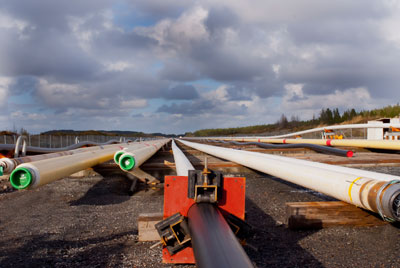 North Sea work has resulted in world firsts for Swagelining Limited
North Sea work has resulted in world firsts for Swagelining Limited Semi-submersible accommodation vessel built in China and chartered in Gulf of Mexico to Cotemar
Semi-submersible accommodation vessel built in China and chartered in Gulf of Mexico to Cotemar
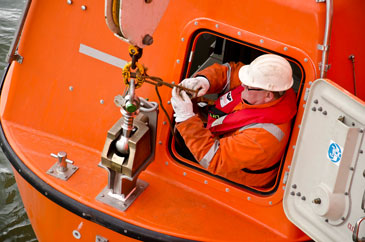 A subsidiary of Wilh. Wilhelmsen Investments (WWI), Wiltrading offers integrated activities in marine safety, fire fighting and protection, equipment and servicing, serving the offshore, oil and gas, shipping, military and cruise industries. The company is an authorised representative and service partner for a wide variety of maritime and offshore equipment producers.
A subsidiary of Wilh. Wilhelmsen Investments (WWI), Wiltrading offers integrated activities in marine safety, fire fighting and protection, equipment and servicing, serving the offshore, oil and gas, shipping, military and cruise industries. The company is an authorised representative and service partner for a wide variety of maritime and offshore equipment producers.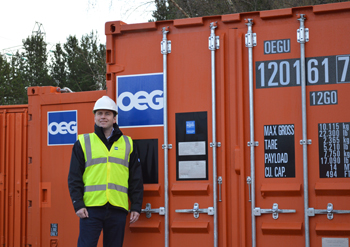 OEG Offshore-John Heiton
OEG Offshore-John Heiton The next
The next 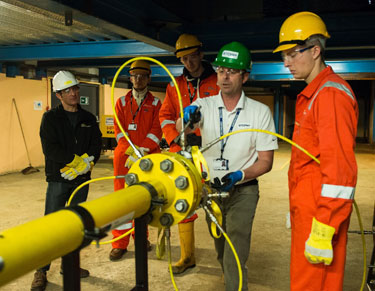 Leading subsea training and trials facility,
Leading subsea training and trials facility, 
 NYC-based
NYC-based  Clark, a UK national, has more than 30 years of experience from the oilfield services, projects and contracting industry, most recently as vice president of production facilities for Schlumberger. He has also held leadership positions at Wood Group and Technip and has broad international experience in overseeing operations and new business developments.
Clark, a UK national, has more than 30 years of experience from the oilfield services, projects and contracting industry, most recently as vice president of production facilities for Schlumberger. He has also held leadership positions at Wood Group and Technip and has broad international experience in overseeing operations and new business developments.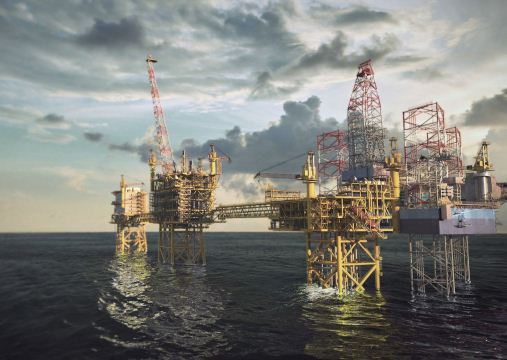 The development of the largest new field discovered in the UK North Sea for a decade* has been approved by the UK Oil & Gas Authority. The Maersk Oil operated high pressure, high temperature (HPHT) Culzean field in the UK Central North Sea is expected to produce enough gas to meet 5% of total UK demand at peak production in 2020/21. Culzean is also the largest gas field sanctioned since East Brae in 1990*.
The development of the largest new field discovered in the UK North Sea for a decade* has been approved by the UK Oil & Gas Authority. The Maersk Oil operated high pressure, high temperature (HPHT) Culzean field in the UK Central North Sea is expected to produce enough gas to meet 5% of total UK demand at peak production in 2020/21. Culzean is also the largest gas field sanctioned since East Brae in 1990*.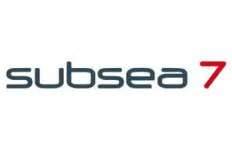
 Amidst the gloomy days of August when Brent Crude bottomed out at $42/bbl, the acquisition of Cameron by Schlumberger ($14.8 billion) took place as one of the largest mergers in the oil patch, following the tie-up of Halliburton and Baker Hughes ($32 billion) in November 2014. This consolidation has resulted in an integrated service & equipment provider covering the full oil & gas lifecycle from reservoir to first flow.
Amidst the gloomy days of August when Brent Crude bottomed out at $42/bbl, the acquisition of Cameron by Schlumberger ($14.8 billion) took place as one of the largest mergers in the oil patch, following the tie-up of Halliburton and Baker Hughes ($32 billion) in November 2014. This consolidation has resulted in an integrated service & equipment provider covering the full oil & gas lifecycle from reservoir to first flow.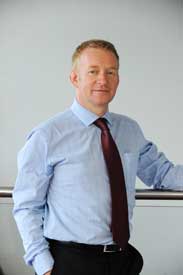 Aquatic Engineering & Construction Ltd, an
Aquatic Engineering & Construction Ltd, an 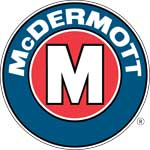
 The liftboat was designed and built by SEMCO, a well known and highly regarded liftboat builder. It is equipped with two 175-ton leg mounted cranes and a large open deck to assist in carrying equipment and supplies in support of various offshore activities. The vessel can accommodate 50 people, including private rooms dedicated for customer representatives.
The liftboat was designed and built by SEMCO, a well known and highly regarded liftboat builder. It is equipped with two 175-ton leg mounted cranes and a large open deck to assist in carrying equipment and supplies in support of various offshore activities. The vessel can accommodate 50 people, including private rooms dedicated for customer representatives.